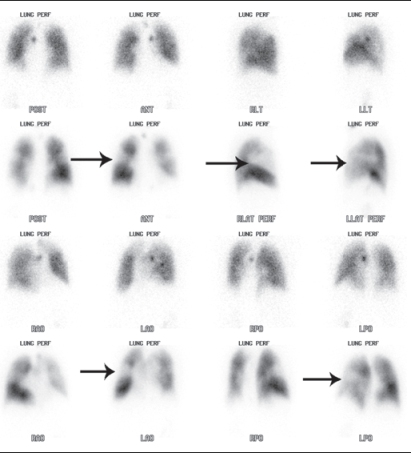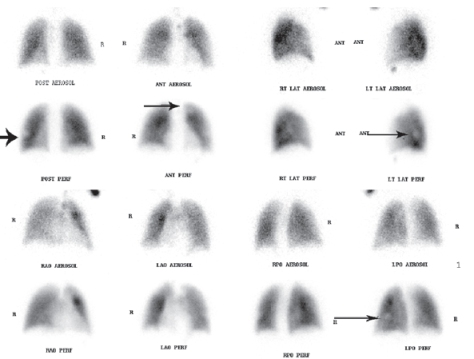|
VQ Scan
Summary
Modified PIOPED Scan Criteria
- High Probability

Figure: High probability lung scan. Large perfusion defects noted without matching ventilation defects.

Figure: Intermediate probability scan with small mismatched perfusion defects not
large enough to qualify as a high probability scan.
- Two or more large (>75% of a segment) mismatched segmental perfusion defects or the arithmetic equivalent in moderate (25-75% of a segment) or large and moderate defects.
- Intermediate Probability
- Two large mismatched segmental perfusion defects or the arithmetic equivalent in moderate or large and moderate defects.
- One matched V/Q defect plus a normal CXR
- Difficult to categorize as low or high or not described as low or high.
- Low probability
- Any perfusion defect with a substantially larger CXR abnormality
- >One matched VQ defects plus some normal perfusion plus normal CXR
- Any number of small perfusion defects plus normal CXR
- Nonsegmental perfusion defects (e.g., pleural effusion, cardiomegaly, enlarged mediastinal structures, raised hemidiaphragm)
- Normal
- No perfusion defects seen
Indeterminate Results
|
|